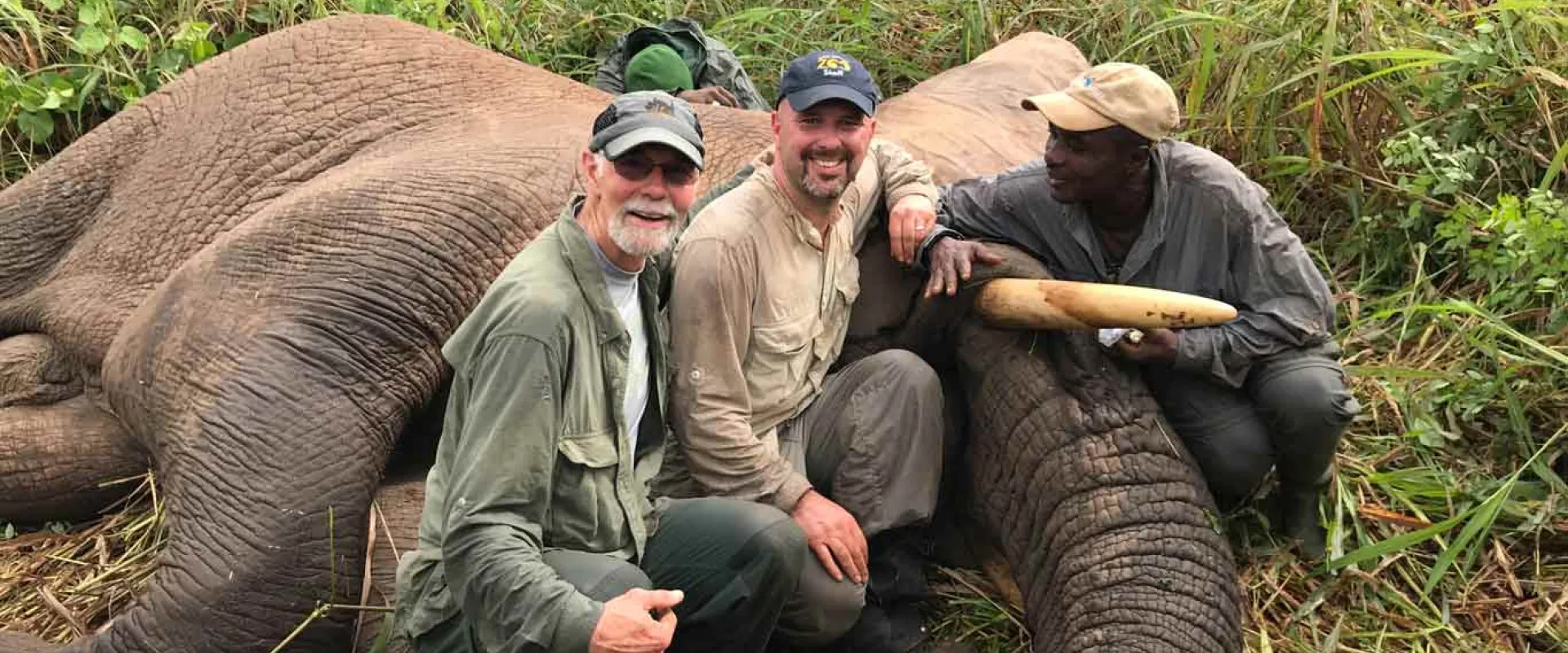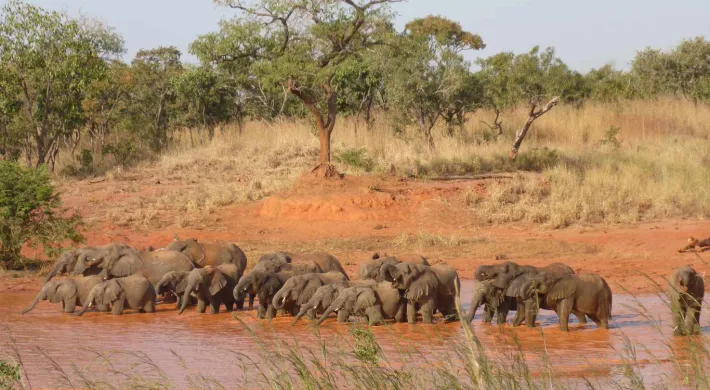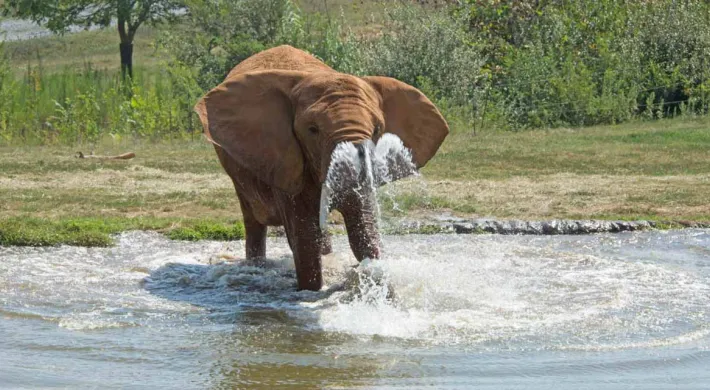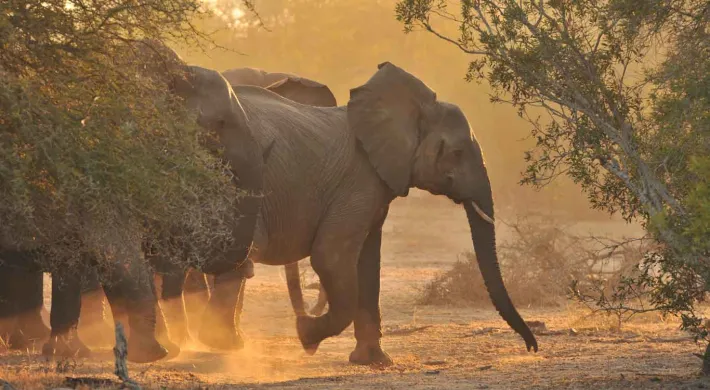Written by Dr. Jb Minter, DVM, Dipl. ACZM, Director of Animal Health for the North Carolina Zoo
When most people picture wild African elephants, images of large groups of savanna elephants roaming across vast grasslands like those seen on popular television shows such as Planet Earth and Our Planet come to mind. The pleasant voice of Sir David Attenborough narrating in the background, taking you on the journey with him and these majestic animals.
While the savanna elephant is the better-known species of the African elephant, they have a smaller, more elusive forest cousin that inhabits the densely wooded tropical forest of Central and West Africa. These cousins also have different appearances.
Forest elephants are smaller in stature, a darker color, have smaller, more oval-shaped ears, and tusks that are straighter and pointed downward instead of curving upward. They are genetically different and have differences in habitat preferences and life history. Despite all these differences, most conservation, governmental, and regulatory agencies have yet to acknowledge them as two separate species formally. Instead, forest elephants and savanna elephants are consistently listed as one species, a decision that disproportionately underestimates forest elephants' conservation status.

Pictured above: Aerial view of forest elephants on the move in Cote d'Ivorie
Forest elephants have adapted to life in the forest by adjusting their diet to match their habitat. They are the largest fruit-eating animal on the planet and are responsible for planting more trees than any other species. As critical as the variety of seeds dispersed by forest elephants is the distance they carry, elephants travel a much greater distance than most other seed dispersers.
Many, including myself, see elephants as ecosystem engineers. Their large size, movement patterns, and destructive feeding behaviors control the availability of resources for other organisms by causing physical changes to the vegetation. The effectiveness of these animals as seed dispersers and ecosystem engineers only makes their need for conservation more urgent. Without forest elephants, the great tropical forest of Africa will undergo dramatic change.
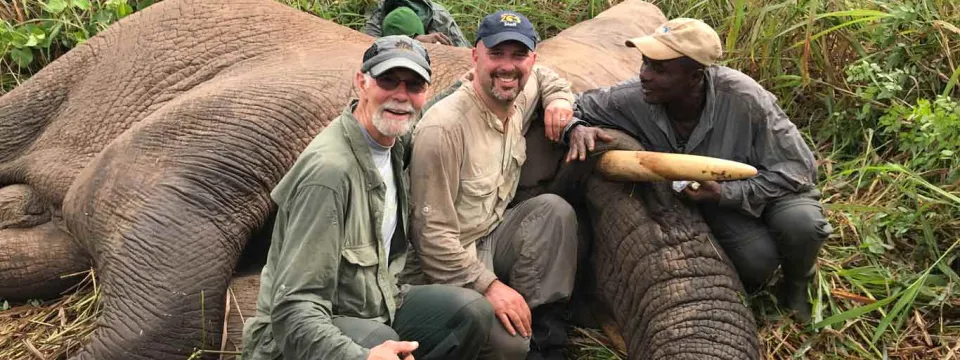
Pictured Above (L to R): Dr. Mike Loomis, chief veterinarian emeritus for the Zoo, Dr. Minter, and Desiree Deontegeo, field technician for the project, with a forest elephant that will be collared to track movements.
Forest elephant populations in Africa have significantly declined throughout the 20th and 21st centuries due to the expansion of human settlements, poaching, and human-elephant conflict. These animals are forced into closer contact with people and viewed as a nuisance because of crop-raiding and the potential injuries and loss of life. Imagine for a minute your entire livelihood, the ability to buy food for your family, or send your kids to school, destroyed in a single night by a herd of elephants. If the human-elephant conflict is not appropriately addressed, these types of negative encounters will have a significant impact on attitudes towards elephant conservation.
For the past twenty years, the North Carolina Zoo has been working in Central and West Africa to understand better the movement patterns and habitat requirements of forest elephants. By attaching GPS satellite collars to elephants, we can monitor their movement patterns in real-time and share this data with in-county rangers and land managers. They use the data to anticipate where elephants are at risk of encountering poachers and alert them when the herds are heading towards human settlements, thereby reducing the risk of human-elephant conflict.

Above: aerial view of the team working quickly to safely place the collar and ensure the elephant rejoins its herd.
Most recently we have been working with the Ministry of Waters and Forests in Côte d'Ivoire to expand on the Zoo's elephant-collaring activities. Many of the elephant populations in Côte d'Ivoire are small, isolated groups living in patches of fragmented forest surrounded by farmland and are struggling to survive under threat from poaching and human-elephant conflict. However, there are some protected areas in Côte d'Ivoire where elephants have survived in larger numbers. With continued interest by the Ivorian government, we are seeing a promising commitment to conserving viable elephants and protecting isolated forest elephant populations in this West African nation.

Pictured Above: Dr. Minter with the elephant collaring team.
The most challenging part of studying forest elephants in the wild is the terrain and thick vegetation. It is so dense that even if you get a glimpse of an elephant, it is never really for more than a minute before they run back into the forest's protective cover, where they blend surprisingly well into the shadows.
Check back next time when I will describe tracking these elusive forest giants.
